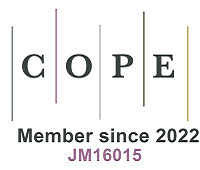Synchrotron X-ray and neutron diffraction study on the deformation and phase transformation mechanisms in TiAl alloys: a review
Abstract
TiAl alloys are considered promising candidates for high-temperature structural applications, primarily because of their low density and good high-temperature performance. However, their broader application remains restricted due to poor ductility and inadequate deformation compatibility. The (α2+γ) lamellar structure, which dominates the service microstructure, exhibits strong deformation anisotropy. Moreover, the large plasticity difference between the α2 and γ phases leads to pronounced inhomogeneous deformation. Accordingly, internal stress accumulates in the α2 phase and may initiate cracks at the α2/γ interfaces. The formation of deformation textures further influences the microscopic deformation and complicates the analysis of stress distribution. Understanding the underlying deformation mechanisms and stress evolution requires real-time observation of these dynamic processes. To this end, synchrotron X-ray diffraction and neutron diffraction are employed for their deep penetration capability and high spatial and temporal resolution. These advanced techniques enable in-situ tracking of lattice strain evolution, load partitioning and phase transformation. This review highlights the deformation behavior of TiAl alloys, including their elastic and plastic responses, texture evolution and internal stress accumulation. Particular attention is given to the reversible stress-induced α2→O phase transformation, which presents promising opportunities for enhancing mechanical performance through targeted microstructural optimization.
Keywords
TiAl alloys, internal stress, lamellar structure, stress-induced phase transformation, synchrotron X-ray diffraction, neutron diffraction, orthorhombic phase
Cite This Article
Liu X, Song L. Synchrotron X-ray and neutron diffraction study on the deformation and phase transformation mechanisms in TiAl alloys: a review. Microstructures 2025;5:[Accept]. http://dx.doi.org/10.20517/microstructures.2025.54














